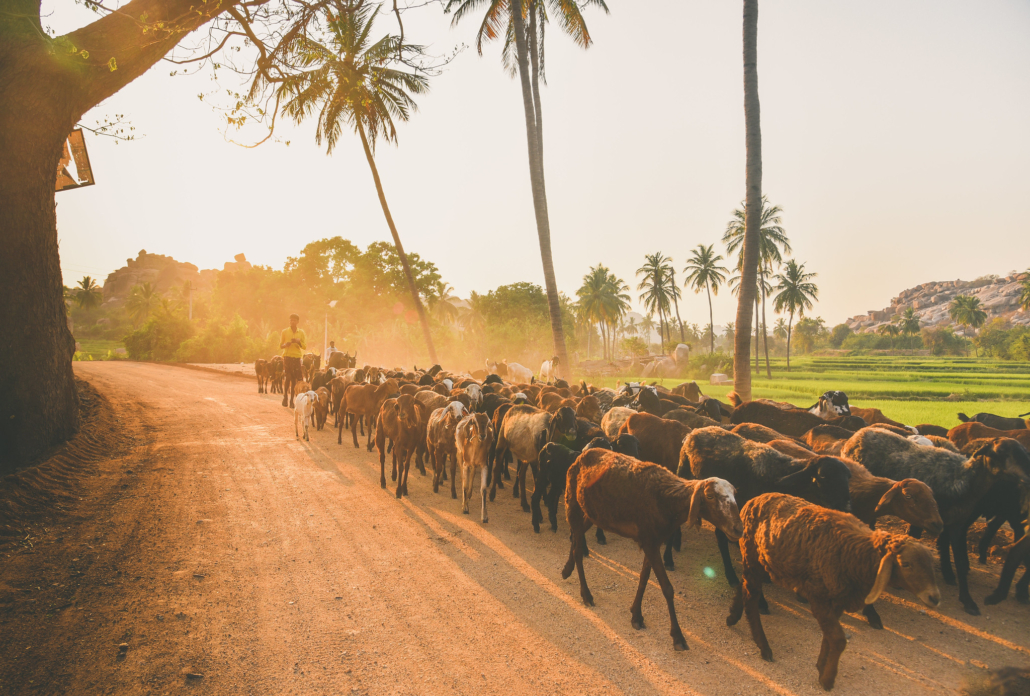Green Progress: Updates on SDG 15 in India
 Sustainable Development Goal 15 (SDG 15) is a cornerstone in India’s pursuit of a balanced future, harmonizing economic development with environmental sustainability. According to the UN, SDG 15 is to “protect, restore and promote sustainable use of terrestrial ecosystems, sustainably manage forests, combat desertification, and halt and reverse land degradation and halt biodiversity loss.” With a significant proportion of the population dependent on agriculture, India recognizes the paramount importance of responsible land management. SDG 15 is pivotal for the nation’s developmental goals, addressing poverty, conserving biodiversity and ensuring sustainable resource utilization.
Sustainable Development Goal 15 (SDG 15) is a cornerstone in India’s pursuit of a balanced future, harmonizing economic development with environmental sustainability. According to the UN, SDG 15 is to “protect, restore and promote sustainable use of terrestrial ecosystems, sustainably manage forests, combat desertification, and halt and reverse land degradation and halt biodiversity loss.” With a significant proportion of the population dependent on agriculture, India recognizes the paramount importance of responsible land management. SDG 15 is pivotal for the nation’s developmental goals, addressing poverty, conserving biodiversity and ensuring sustainable resource utilization.
As India grapples with the challenges of rapid urbanization and intensive agricultural practices, focusing on SDG 15 becomes a linchpin for maintaining ecological equilibrium and uplifting communities from poverty.
Updates on SDG 15 in India and Benefits to Those in Poverty
India, home to more than billion people, grapples with widespread poverty, affecting millions. According to the World Bank, as of 2021, nearly 21.9% of India’s population lived below the national poverty line. However, amidst these challenges, efforts aligned with Sustainable Development Goal (SDG) 15 — known as “Life on Land” — have shown promise in mitigating poverty’s impact. Initiatives like afforestation programs and sustainable land management not only contribute to environmental conservation but also generate employment opportunities, enhancing economic prospects for vulnerable communities.
By fostering resilience and sustainable practices, these efforts exemplify the transformative potential of SDG 15, offering a beacon of hope for poverty alleviation in India. By emphasizing sustainable land management practices, the goal creates opportunities for employment, particularly in rural areas where poverty is widespread. Preserving biodiversity ensures access to crucial natural resources, providing marginalized communities with a sustainable source of income. This comprehensive approach addresses poverty at its roots, illustrating the intricate link between environmental conservation and poverty alleviation.
1. Afforestation Initiatives
Improved tree cover is pivotal in India’s battle against poverty. Afforestation initiatives, especially in regions grappling with high poverty rates, become economic lifelines by generating jobs in tree planting and forest management. The heightened tree cover addresses soil fertility and erosion and provides essential resources like fruits, nuts and medicinal plants. This multifaceted impact is particularly crucial for those in poverty, where increased economic opportunities and access to vital resources through improved tree cover become integral in breaking the cycle of poverty.
2. Conservation of Endangered Species
India’s efforts to protect endangered species have borne fruit. The Wildlife Protection Society of India highlights a positive trend in tiger populations, attributed to intensified anti-poaching measures and habitat preservation initiatives. This aligns seamlessly with SDG 15’s core objective of ensuring biodiversity conservation, showcasing India’s dedication to this global cause.
3. Sustainable Agriculture Practices
The National Mission for Sustainable Agriculture (NMSA) spearheads India’s drive toward sustainable agricultural practices. NMSA significantly prevents land degradation and promotes biodiversity by implementing soil health management practices, agroforestry and watershed management. This concerted effort reflects India’s commitment to updating SDG 15 strategies for the sustainable use of land resources.
4. Combating Desertification
Desertification poses a significant threat to land ecosystems in India. It impacts people by exacerbating water scarcity, reducing agricultural productivity and displacing communities. The National Action Plan for Desertification (NAP-CCD) is a crucial initiative addressing this challenge. NAP-CCD aims to combat desertification through sustainable land management practices, afforestation and community involvement. An exemplary success is visible in the Kumbhalgarh region of Rajasthan, where water harvesting techniques and afforestation have reversed land degradation, offering a glimpse of the positive impact NAP-CCD can have on affected areas.
5. Sustainable Urban Development
One of the essential updates on SDG 15 in India is that sustainable urban development under SDG 15 positively impacts people’s lives in rapidly urbanizing areas. The Smart Cities Mission, implemented in cities like Pune, integrates green and sustainable urban planning. This results in ecologically balanced and resilient urban landscapes, enhancing citizens’ well-being. Green spaces, efficient waste management and reliance on renewable energy preserve land ecosystems within cities and elevate urban populations’ overall quality of life.
6. International Collaboration: Global Efforts for Biodiversity Conservation
India actively engages in international collaborations, recognizing the global nature of environmental issues. Partnerships with the United Nations Development Programme (UNDP) and the Global Environment Facility (GEF) demonstrate a commitment to achieving SDG 15 targets. These partnerships foster global cooperation in biodiversity conservation through research, knowledge exchange and financial support. Such collaborative efforts amplify the impact of SDG 15 initiatives, creating a ripple effect that benefits India and the global community.
7. Research and Innovation
Investments in research and innovation are pivotal for achieving SDG 15. The Indian Council of Agricultural Research (ICAR) and other research institutions are at the forefront of this effort. Research initiatives include developing drought-resistant crops, promoting precision agriculture and adopting sustainable farming practices. The success of these endeavors is evident in states like Karnataka, where farmers adopting innovative practices have witnessed increased crop yields and improved soil health, underscoring the tangible benefits of research and innovation in updating SDG 15 strategies.
Making Progress
India’s journey towards achieving SDG 15 is marked by tangible progress across afforestation, conservation, sustainable agriculture, community engagement, urban development, international collaboration, research and innovation. These updates reflect India’s commitment to the global agenda and showcase the positive impact on the environment and the lives of its citizens. As India continues to forge ahead, these initiatives are beacons of hope for a sustainable and harmonious coexistence with nature.
– Srishti Arora
Photo: Flickr
